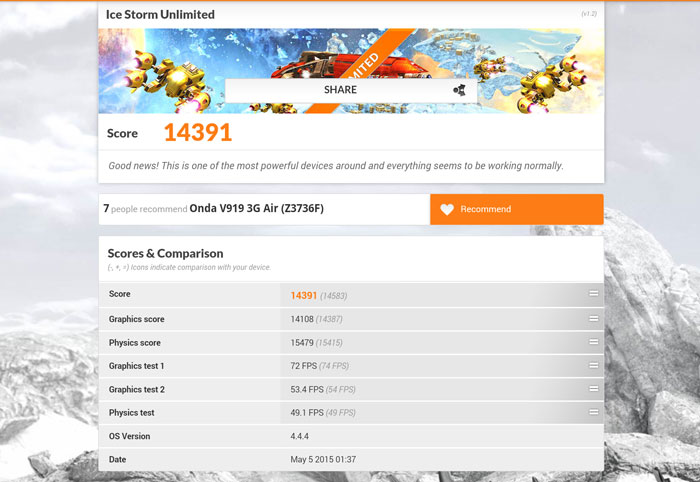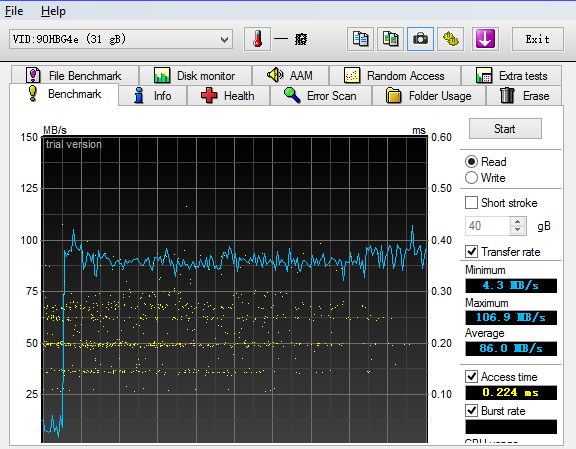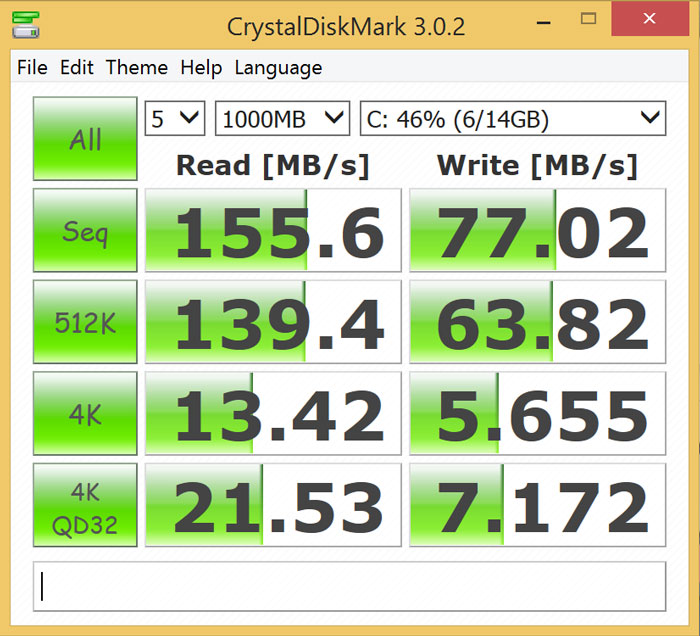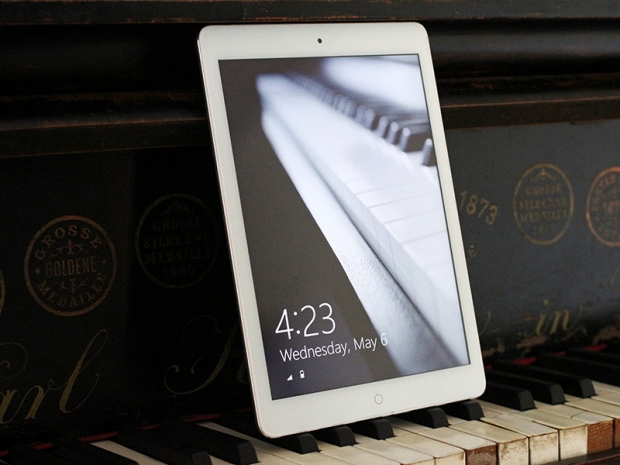Index
Onda V919 Air Specs and Performance
The Onda V919 Air packs some nice hardware, including the Atom Z3736F, a decent screen, and a plenty of storage. However, since this is a dual-boot device, the storage is divided between the two operating systems, which is worth keeping in mind.
The icing on the cake is 3G connectivity, which may come in very handy for some small businesses with an appetite for cheap, connected devices. Obviously, 3G connectivity is not global and won’t work in many regions, so please check the spec before pulling the trigger.
Onda V919 Air spec sheet:
- SoC: Intel Atom Atom Z3736F, 22nm
- CPU: Four 64-bit x86 cores clocked at 1.33GHz to 2.16GHz
- GPU: 7th generation Intel HD Graphics, clocked up to 646MHz
- Storage: 32GB/64GB internal eMMC (Hynix), micro SD slot up to 64GB
- OS: Windows 8.1, Android 4.4 (dual-boot)
- Rear camera: 5-megapixel sensor
- Front facing camera: 2-megapixel sensor
- Battery: 7000mAh lithium ion
- Dimensions: 240 x 170 x 8mm (9.43 x 6.68 x 0.31in)
- Weight: 496g (1.1lbs)
- Connectivity: 802.11b/g/n WiFi, Bluetooth, 3G (GSM+WCDMA)
- Sensors: 3-axis Freescale accelerometer
- Network support: GSM+WCDMA (GSM 850/900/1800/1900MHz, WCDMA 2100MHz)
A quick glance at the spec sheet reveals where Onda decided to save money. The sensor suite is practically non-existent, which really isn’t much of a problem for a tablet (few people will need a GPS or proximity sensor on a tablet). However, there is no light sensor, and with a power hungry high-resolution display it would come in handy.
3G is limited to the 2100MHz band, which is the most popular band out there, but it’s not available in North America and much of Latin America. However, it should work just fine on many 3G networks in Europe, Asia, Africa and Oceania.
Like we said, the dual-boot approach has some major implications on storage. On the 32GB model you get 7GB of storage for Android, and 16GB for Windows. This obviously doesn’t add up to 32GB, but keep in mind that Windows needs a recovery partition. The good news is that you can use a microSD card for expansion, or get the 64GB version instead.
In terms of performance, the Onda V919 Air is just another Bay Trail tablet, so there are no surprises. However, how do we go about testing the same hardware under two operating systems?
In Android, the Onda is roughly on a par with mid-range phones. Bear in mind that the tablet ships with Android 4.4, so it can’t take advantage of the CPUs 64-bit capabilities. Also, the 2048x1536 display needs more GPU muscle than a 1280x800 or 1920x1080 display (both are commonly used on Windows tablets nowadays).

In good old Quadrant, the Onda scored an unimpressive 14559 points. However, in 3D Mark Ice Storm Unlimited it ended up with 14391, which is not bad. It’s still not as good as the latest flagship phones, but it’s not bad either. Basemark OS II gave it 890, which is slightly better than the average mid-range phone. In AnTuTu, we got scores north of 33000.
We decided to run a couple of storage benchmarks in Windows. Since Bay Trail has been around for more than a year, there was really no point in running additional CPU tests. However, storage can be a problem on inexpensive Bay Trail devices, as vendors try to pinch pennies on every component. Luckily the Hynix eMMC drive offers good performance.

HD Tune and CrystalMark reported transfers speeds in excess of 100MB/s, and in some instances well over 150MB/s. This is more than enough for a Bay Trail system, as the CPU is more likely to be the bottleneck under load.

Windows feels a tad more responsive than Android, at least on this particular device. The UI is noticeably smoother and the user experience is better all around.




